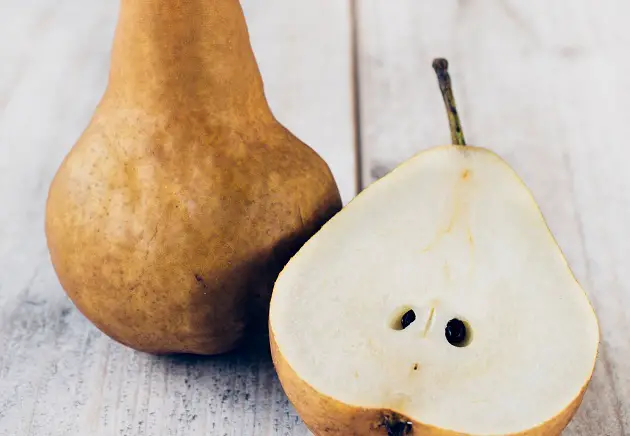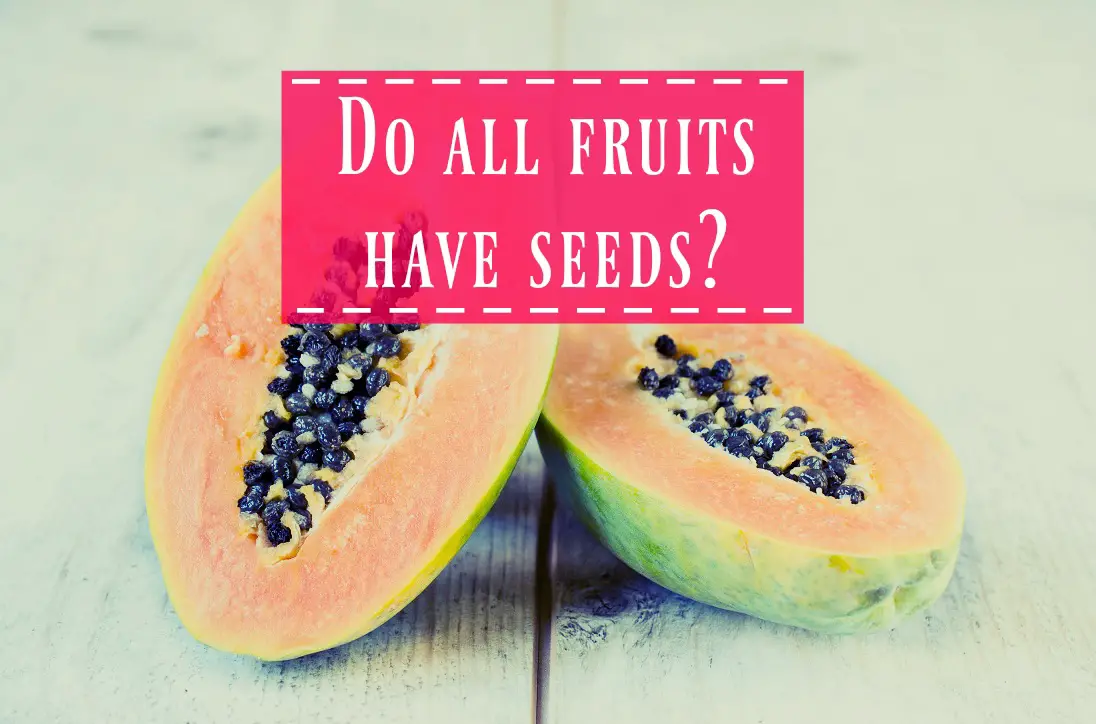If you look up the textbook definition of a “fruit,” you may be surprised by what you find out!
According to researchers at the University of California-Santa Barbara, you know you are eating a fruit when you find one or many seeds inside of it. (1)
However, this newfound knowledge can quickly become a brain-twister when you start to realize that “vegetables” like cucumbers, bell peppers and avocados aren’t really vegetables at all, but are actually fruits!
Luckily, unless you are a botanist or a chef, you may not ever need to be able to discuss the detailed scientific variations that distinguish true fruits from true vegetables.
But it is still nice to know more about what makes a fruit a fruit and how to tell fruits and vegetables apart, which is what this article will help with!
Do all fruits have seeds?
As you learned in the introduction here, the answer to the question is a resounding YES.
But exactly how does this happen?
As the botanists at Sciencing explain, first the fruiting plant produces flowers.(2)
These flowers contain two essential elements: male parts (the pollen-producing stamen) and female parts (the pistil that leads to the plant’s ovules and ovaries).
NOTE: In rare cases, the plant may be able to pollinate itself and produce fruit without any help (a process called “self-pollination“).
But in most cases, the wind currents, birds, bats, bees and insects provide a necessary service by transporting pollen from one plant’s male parts to another plant’s female parts (a process called “cross-pollinating”).
This is done to ensure the health and genetic diversity among the plant population.
Once a plant’s pistil receives another plant’s pollen, the process of fertilization is complete and it is time for the plant to start growing fruit!
The plant makes sure to tuck some seeds – one or many – inside the skin and flesh of the fruit as it forms to ensure the survival of its kind.
What are “seedless fruits?”

As Scientific American explains, plants that self-pollinate can sometimes fall prey to genetic error, naturally producing fruits without any seeds inside of them.(3)
However, the more common reason why some fruits are seedless relates to newer experiments with genetic engineering.
These fruits are sometimes called GMOs (genetically modified organisms) or simply clones, since the plants that produce them are genetically identical to each other in every way.
Biologists now know how to manipulate different plants’ reproductive cycles to produce fruits without any seeds.
If you have ever eaten a seedless watermelon, orange or tangerine, you have already benefited from this newfound knowledge.
These seedless fruits are generally more time-intensive to produce, since it requires a very deliberate pollination or propagation strategy to ensure the resulting fruit will be free from seeds.
But since seedless fruits are becoming quite popular with many consumers today, they are here to stay at least in commercial orchards and farming operations.
Why do all fruits have seeds?
Fruits have a very important job to do in nature – much more important to the plant than just feeding nearby insects, birds, animals or people!
The seeds hidden inside of each fruit have everything they need to grow into a new plant and ensure the survival of that plant species.
To ensure its seeds will get planted and have the chance to grow, the plant produces a tasty outer fruit around its seeds to encourage insects and birds and other animals to eat the fruit and then distribute the undigested seeds.
This is also why the seedless fruits mentioned in the previous section here don’t typically occur in nature – farmers must genetically manipulate their plants in some way to get them to produce seedless fruits.
Plants that produced seedless fruits in nature would quickly be in danger of dying out!
Why do some fruits have lots of seeds and some have only one seed?

As Backyard Nature explains, there are three different classifications for fruits.(4)
Simple fruits.
Simple fruits typically have just one seed.
Examples of simple fruits include legumes (beans, peas), pitted fruits (plums, avocados) and tree nuts (acorns, hazelnuts).
The most basic reason why simple fruits typically have only one seed is because there is only a single ovule, or seed-to-be, inside that plant’s pistil.
Aggregate fruits.
Aggregate fruits are more commonly called “berries.” The difference here is that the fertilization process activates multiple pistils inside each flower, which then produce multiple berries.
Examples of aggregate fruits include strawberries and blackberries.
Multiple fruits.
Multiple fruits are perhaps the most confusing group, since these are typically larger fruits and sometimes the seeds are really hard to identify!
With multiple fruits, a group of blossoms basically gets together to produce one fruit. Examples of multiple fruits include pineapples, figs and breadfruit.
What fruits have multiple seeds?
The groups of fruits which contain multiple seeds are quite varied!
Pome.
The class of fruits called pome includes apples and pears, and these fruits have their seeds located all the way in the center of the fruit beneath the skin and pulp.
Legumes.
The class of fruits called legumes includes peas and peanuts, and these fruits cluster their seeds inside of smaller fruits contained in a harder outer shell.
Berries.
The class of fruits known as berries includes kiwis, strawberries, watermelon, grapes, cucumbers and papaya. These fruits may cluster their seeds together or spread them out.
What fruit contains the most seeds?
The pomegranate wins this contest hands down, followed by the papaya, the banana and the watermelon.
What fruits have only one seed?
As Basic Biology explains, biologists call fruits with just one seed “drupes.”(5)
The rest of us tend to call these single-seed fruits “stone fruits” or pitted fruits. Stone fruits are some of the most popular kinds of fruits. You probably have a favorite stone fruit yourself!
Examples of stone fruits include avocados, peaches and plums.
Fruits and Their Seeds
Of course, there is a reason why some people make a career out of plant biology.
It can get quite a bit more complex!
But this gives you a great overview of single-seed and many-seeded fruits with examples.
Want to conduct your own investigation of fruits and seeds?
Pick some of your favorite fruits from each list here and cut them open, then count up the seeds. This will help you visualize everything discussed here to really bring it to life!
If you interested please check how much potassium is in strawberries.
Resources
(1)http://scienceline.ucsb.edu/getkey.php?key=1293
(2)https://sciencing.com/fruit-formed-plants-6496874.html
(3)https://www.scientificamerican.com/article/how-do-seedless-fruits-ar/
(4)http://www.backyardnature.net/frt_3grp.htm
(5)https://basicbiology.net/plants/angiosperms/fruit/
Leave Feedback: Was this article helpful?

